 Appearances can be dangerously deceptive in the garden. Some of the most delicate, pretty little things harbor substances that can easily fell a hale and hearty grown-up. Some flowers found in almost every full-fledged Michigan garden can raise welts and rashes on the skin, burn the ability to see from the eyes. Reading in a 1934 tome called “The Herbalist,” by Joseph E. Meyer, “author and compiler,” it's astounding how very many well-known garden friends and companions secretly possess the power to commit murder most foul.
Appearances can be dangerously deceptive in the garden. Some of the most delicate, pretty little things harbor substances that can easily fell a hale and hearty grown-up. Some flowers found in almost every full-fledged Michigan garden can raise welts and rashes on the skin, burn the ability to see from the eyes. Reading in a 1934 tome called “The Herbalist,” by Joseph E. Meyer, “author and compiler,” it's astounding how very many well-known garden friends and companions secretly possess the power to commit murder most foul. Nibbling the young, spring leaves of delphinium or larkspur before the plant flowers, for instance, will rapidly poison the eater. The leaves and seeds of these plants may cause dermatitis. The fair-haired spring bulbs of narcissus, daffodil, jonquil and paper-whites all result in poisoning if ingested. At the other end of the flower season, autumn crocus are highly venomous, potentially not just sick-making but fatal if eaten.
The milky juice in young seed capsules of the poppy carries the extremely potent opium narcotic. Severe poisoning will also follow upon eating fresh or dried leaves of foxgloves, and children can be poisoned from chewing on foxglove flowers or seeds. Turkey mullein, or doveweed, holds in its veins a narcotic that was employed by Native Americans to make poisoned arrows, and which causes stupefaction when it enters the bloodstream.
Hellebore, or the Lenten rose, is filled with alkaloid toxins from its late-winter blooming flowers, to the leaves, to the extremely poisonous root, and consumption of any part of the plant can bring on violent vomiting. Bruising or brushing the leaves can also cause rashes. Sweet, petite lily-of-the-valley contains deadly amounts of cardiac clycosides in the leaves, flowers, rootstalk and berries. A child can perish just from drinking the water in a vase of these flowers! Considering how the lily-of-the-valley's enchanting scent, bell-shaped flower and diminutive size make it a magnet for children, its toxicity is especially worrisome. These little charmers bear close monitoring when children are about.
Some of the most attractive wildflowers are also very efficient poison-delivery systems. Dutchman's breeches, a very common and attractive sight every springtime throughout Michigan woodlands, have leaves and roots that will induce trembling, loss of balance, difficulty breathing and convulsions, should one be foolish enough to take a bite out of them. The fluid in the stalks of lady's slipper raises a poison ivy-like rash. Deadly nightshade (pictured above), also traveling under the alias of jimsonweed, is so lethal that consuming it leads to an intoxicated state, intense agony, delirium and death.
The latex sap in butterfly weed (or spurges) is potentially carcinogenic, burns the eyes and inflicts dermatitis. The feathery Chinese brake fern has an unusual talent for absorbing large amounts of arsenic from the soil, which it effortlessly passes along as a venom to those who eat its leaves. The bracken fern brings on acute poisoning in ruminants (including humans who may happen to graze upon it). The roots of squill are used to make a poison rodent powder. And the juice of milkweed stalks is another virulent poison, to animals and humans alike.
Jeepers creepers! Mother Nature sure knows how to arm her progeny with weapons against would-be predators. Of course, she also endows many of them with curative, calming and beneficial substances, as any herbal practitioner can attest. Even the baneful milkweed sap is said to eradicate warts if rubbed upon them (assuming one doesn't accidentally then transfer the affected area to one's mouth and die before the wart disappears).
The juice of the kindly Joe Pye weed, applied as a poultice, will heal sores, wounds and bruises, and hunters have noted that a wounded deer will seek out this weed to consume. The bark of willow trees and the ground leaf of Meadowsweet offer an aspirin-like chemical without aspirin's side effects, efficacious remedy for headaches, rheumatism and arthritis. Violets are known as nature's Vitamin C, being richer in this vitamin even than oranges, pound for pound. Verbena plants proffer a natural antidote to their more injurious cohorts by arresting and neutralizing the diffusion of ingested poison.
All told, it's clearly best to be well-armed with a thorough botanical guidebook before going noshing in the dodgy, chimerical environs of the plant world, even unto the gentle, frothy, fragile-seeming flower beds. Knowledge is needed to distinguish the benign edibles from the potential plant assassins and to identify horticultural helpers like the periwinkle. An old English herbalist, one Dr. Culpepper, promises that “the leaves of periwinkle, if eaten by man and wife together, will cause love between them.” And if that doesn't work out as anticipated, there's abundant recourse to be sought from Mother Nature's more pernicious gifts. Dram of nightshade tea, old thing?
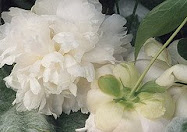


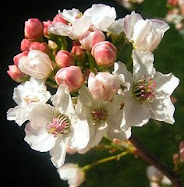
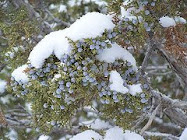

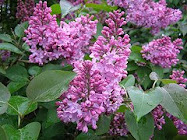
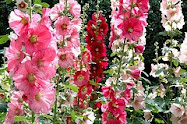
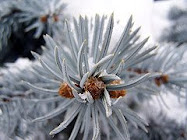
1 comment:
nice.....great read...
goodhealthissues.blogspot.com
Post a Comment